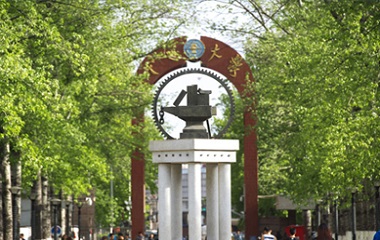A cobblestone path winds upward, flanked by Ming and Qing courtyard homes cascading along the mountainside. With dark tile roofs and stone walls interlaced by narrow lanes, time seems to have stood still here for centuries.
On October 27, more than 60 international students from the International Business School of Beijing Foreign Studies University (IBS.BFSU) visited Cuandixia Village in Mentougou District, Beijing—a settlement often called a “living fossil of northern vernacular architecture.” Tracing the weathered brick walls and meandering through its stone-paved alleys, the students embarked on an immersive journey to experience and interpret Chinese culture in its most authentic setting.

Before the visit, students conducted preliminary research on the historical development of Cuandixia and China’s rural revitalization strategy. During the field trip, they carried out group investigations from various perspectives — architectural layout, folk traditions, and tourism development — to explore how this ancient village has preserved its heritage while embracing modern vitality.
Rural Revitalization: A New Look for an Ancient Village
Inside local homes, the students tasted authentic farmhouse cuisine and experienced elements of traditional rural life. They also witnessed how rural revitalization initiatives have breathed new life into this centuries-old settlement. Once a quiet mountain village affected by population outflow, Cuandixia has now revitalized itself by leveraging its heritage architecture to develop homestay tourism and cultural and creative industries—creating a virtuous cycle where “preservation enables use, and use strengthens preservation.”

“This shows a healthy interaction between heritage protection and community development,” said To Vien Chi from Vietnam. “Preservation isn’t about locking things away — it’s about finding new value for them in modern life. That’s the only way to achieve sustainable development.”

“Touching these ancient bricks and stones felt like hearing the voice of history,” shared Alana from Peru. “The character ‘爨’ (cuàn) meaning ‘to cook and gather around fire,’ symbolizes family continuity and communal harmony—it vividly reflects how Chinese people value family inheritance and coexistence.”

Viktoriia from Russia was impressed by the village’s spatial planning: “The layout is not only beautiful but also practical. It respects tradition while meeting modern needs, giving me a clearer understanding of the Chinese idea of ‘harmony between humans and nature’.”

Educational Innovation: From Knowing to Doing — A Dialogue of Civilizations
IBS.BFSU organizes Cultural Immersion Week to guide international students from knowing about China to understanding China. By encountering living heritage, students grasp the resilience and inclusiveness of Chinese civilization. The School is gradually shifting from conventional classroom instruction to a practice-oriented teaching model that integrates knowledge and action. Such “classrooms in motion” are essential to high-quality education for international students in China—enabling them to comprehend the nation’s development logic and cultural foundations through direct cultural and local engagement.


As the sun set, the students reluctantly bid farewell to the ancient village. The textured traces on stone walls and the lived-in atmosphere of the courtyards had already planted seeds of understanding in their hearts. As future ambassadors of cross-cultural exchange, they now carry new reflections on civilizational dialogue to a broader global stage.










